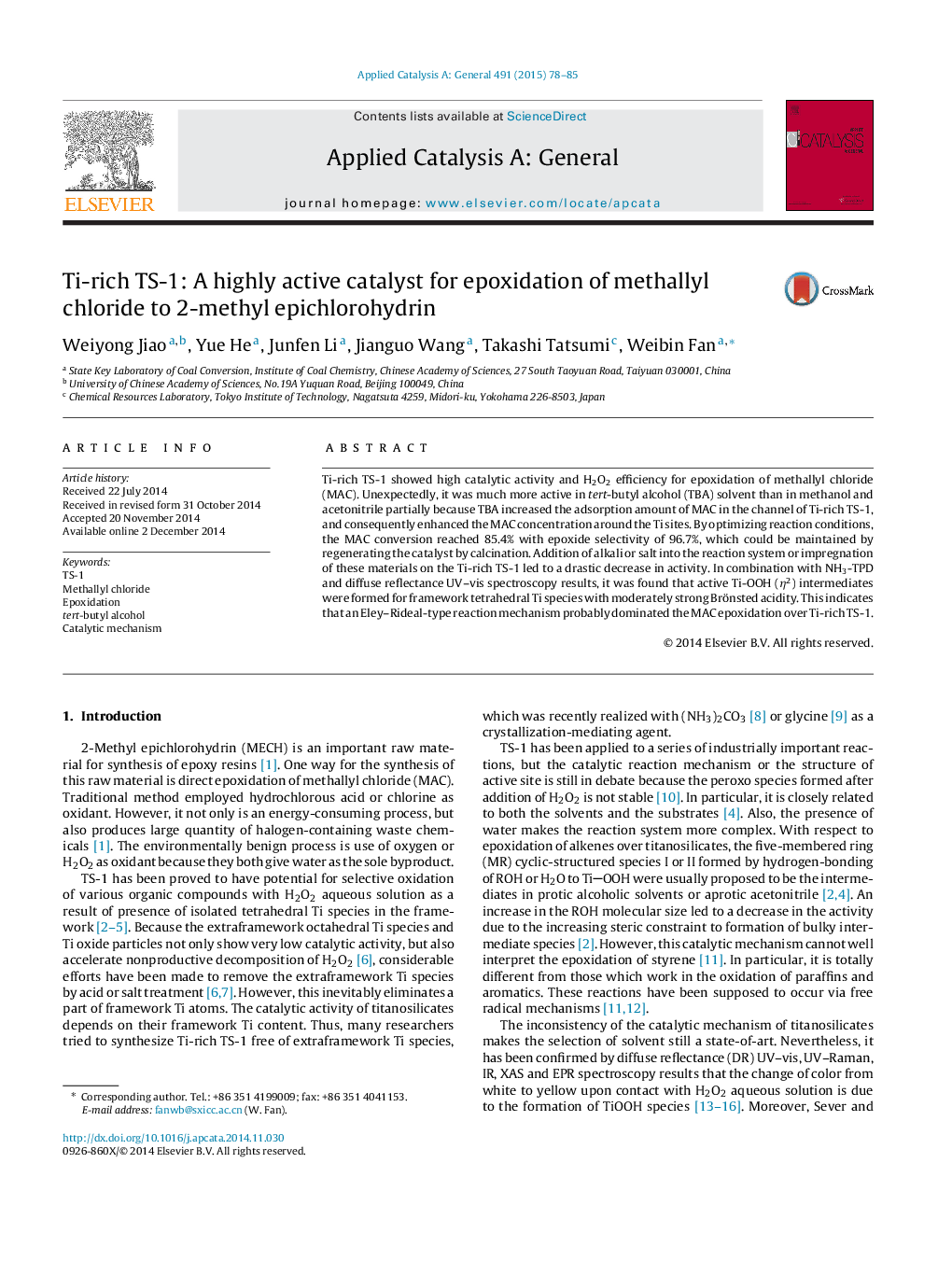| Article ID | Journal | Published Year | Pages | File Type |
|---|---|---|---|---|
| 39329 | Applied Catalysis A: General | 2015 | 8 Pages |
•TS-1 gave a much higher MAC conversion and epoxide selectivity in t-BuOH than in MeOH.•Much more MAC was adsorbed on the TS-1 in t-BuOH solvent than in MeOH.•Moderately strong Brönsted acid sites are responsible for formation of TiOOH species.•An Eley–Rideal-type mechanism dominates MAC epoxidation process over TS-1.
Ti-rich TS-1 showed high catalytic activity and H2O2 efficiency for epoxidation of methallyl chloride (MAC). Unexpectedly, it was much more active in tert-butyl alcohol (TBA) solvent than in methanol and acetonitrile partially because TBA increased the adsorption amount of MAC in the channel of Ti-rich TS-1, and consequently enhanced the MAC concentration around the Ti sites. By optimizing reaction conditions, the MAC conversion reached 85.4% with epoxide selectivity of 96.7%, which could be maintained by regenerating the catalyst by calcination. Addition of alkali or salt into the reaction system or impregnation of these materials on the Ti-rich TS-1 led to a drastic decrease in activity. In combination with NH3-TPD and diffuse reflectance UV–vis spectroscopy results, it was found that active Ti-OOH (η2) intermediates were formed for framework tetrahedral Ti species with moderately strong Brönsted acidity. This indicates that an Eley–Rideal-type reaction mechanism probably dominated the MAC epoxidation over Ti-rich TS-1.
Graphical abstractFigure optionsDownload full-size imageDownload high-quality image (253 K)Download as PowerPoint slide
